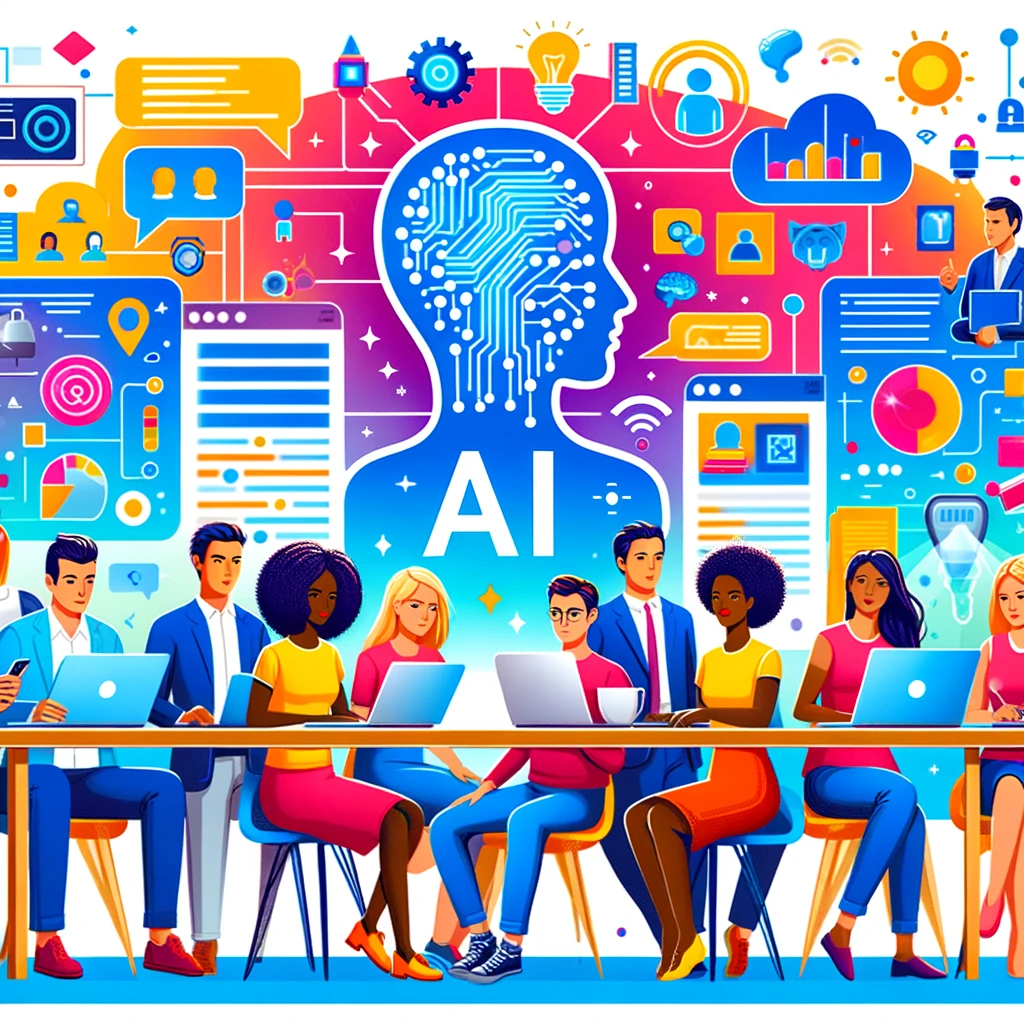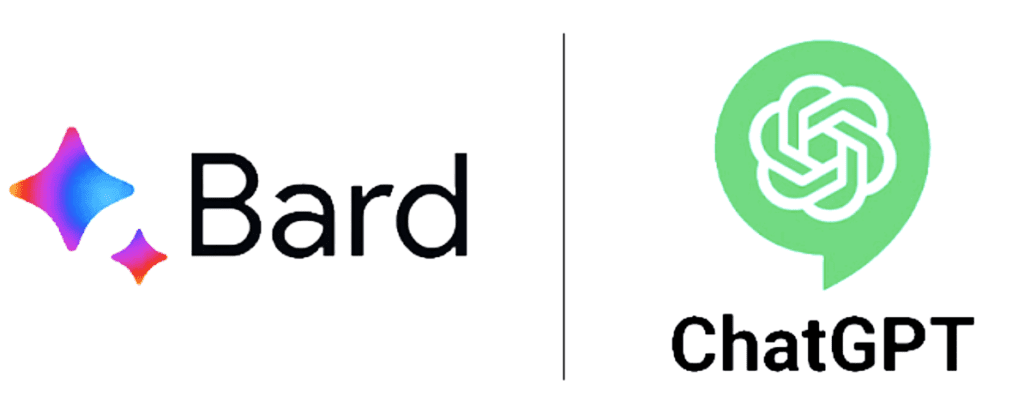How To Get Started Using AI and Things You Can Do With AI Tools
Updated on January 7, 2024 by Tim Donahue
Artificial Intelligence tools like ChatGPT and Bard are amazing.
But how do you start using AI?

Table of Contents
Demystifying AI: What It Is and Isn’t
Artificial Intelligence, or AI, is technology that allows computers to learn and make decisions. It’s not just science fiction; it’s real and used in everyday life, from voice assistants to online shopping recommendations. Understanding AI means knowing how it can think and learn from data, helping us solve problems and make life easier.
- AI is about machines that can learn and make decisions, not robots taking over.
- It uses algorithms to improve from experience, similar to how humans learn.
- Data is crucial for AI, as it learns and gets better with more information.
AI Tools for Beginners: Where to Start
Starting with AI doesn’t require advanced technical knowledge. There are AI tools designed for beginners that help with tasks like automating work, analyzing information, or creating content. These tools are user-friendly and a good way to get familiar with AI.

- Try out tools like ChatGPT or Bard for writing, problem solving, information, data parsing, creating code – or DALL-E for image creation.
chat.openai.com
bard.google.com - Look for platforms with simple interfaces and templates to start.
- AI tools for data analysis can provide insights without needing expert skills.
15 Ways To Use AI In Business with ChatGPT and Bard
Below are examples you can try using, along with a simple prompt example.
- Automate customer service responses: “Create a customer service response for a delayed shipment inquiry.”
- Engaging marketing content: “Generate an engaging blog post about the latest trends in sustainable fashion.”
- Product descriptions: “Write a compelling description for a new line of athletic wear.”
- Chatbots for websites: “Draft a script for a chatbot greeting visitors on a tech store website.”
- Email marketing campaigns: “Compose an email for a marketing campaign promoting our summer sale.”
- Business reports and summaries: “Summarize the key findings of the attached sales report.”
- Business plans or proposals: “Outline a business plan for a start-up coffee shop.”
- Translate content: “Translate the following customer service responses into Spanish.”
- Automated FAQ responses: “Create answers for the top 5 frequently asked questions about our product.
- Training materials and guides: “Develop a training guide for new employees in the customer service department.”
- Brainstorming session ideas: “Provide ideas for a brainstorming session about increasing online engagement.”
- Legal documents or contracts: “Generate a basic contract template for freelance graphic design services.”
- Presentations: “Create an outline for a presentation on digital marketing strategies.”
- Survey questions and analysis: “Draft a set of survey questions for customer feedback on our new app.”
- Coding assistance or debugging: “Help debug the following Python script for data analysis.”
AI for Data Analysis: Uncovering Insights
Data analysis with AI can reveal patterns and information that might be hard to see otherwise. AI is great at going through lots of data quickly to find useful insights. This can help in understanding markets, customer habits, or finding ways to improve how a business runs.
- AI helps find trends and make decisions based on data.
- Predict customer behavior to adapt your business approach.
- Real-time analytics and reporting are made easier with AI.
Getting Creative: Unusual Uses of AI
AI isn’t just for data and numbers; it can also be used for creative purposes. AI has been used to create art, write stories, and even compose music. These creative uses show how versatile AI can be.
- AI can create artworks and designs, offering new forms of creativity.
- Some AI programs write stories or poems, using language in new ways.
- AI in music can compose tunes or help musicians in their creative process.
15 Ways To Use AI In Everyday Life with ChatGPT and Bard
Below are examples you can try using, along with a simple prompt example.
- Day planning: “Help me plan my schedule for tomorrow, focusing on work and exercise.”
- Learning new languages: “Provide a simple conversation in French for a beginner to practice.”
- Recipe ideas and cooking tips: “Suggest a vegetarian recipe for dinner using spinach and mushrooms.”
- Create a low calories or low carb meal plan: “Create a daily meal plan for me that doesn’t exceed 1600 calories or 40 carbs in a day”
- Latest news and trends: “What are the latest trends in renewable energy sources?”
- Homework assistance: “Explain the concept of photosynthesis in a simple way for a middle school project.”
- Fitness advice and workouts: “Design a 30-minute home workout routine for beginners.”
- Travel itineraries: “Plan a 3-day itinerary for a sightseeing trip to Rome, Italy.”
- Book or movie recommendations: “Recommend some sci-fi books for teenagers.”
- Writing personal emails: “Help me write an email to a friend inviting them to my birthday party.”
- Gardening tips: “Provide tips for growing tomatoes in a home garden.”
- DIY project ideas: “Suggest some easy DIY projects for decorating a home office.”
- New hobbies or crafts: “List some fun and creative hobbies I can start this weekend.”
- Tech troubleshooting: “My laptop is running slow. What steps can I take to fix it?”
- Fashion and styling advice: “What are some essential pieces for a summer wardrobe?”
- Meditation and mindfulness: “Guide me through a short meditation for stress relief.”
What to Expect When Working with AI : Sometimes It Makes Mistakes
What to expect when starting to use AI tools like Bard and ChatGPT?
Expect to get a lot of great information really fast!
But – expect that sometimes AI will not do what you wanted it to do.
In this case you need to try to give me more context, or more information about exactly what you want, and see if you can get the desired results.
Expect that it will be wrong sometimes. I’d say it gives me a wrong or misleading answer maybe 5% of the time. It might say things that are contradictory occasionally. When these things happen, ask it for clarification and correct it as needed.
Remember, AI is sort of like a very resourceful and knowledgeable 12 year old.
You need to check the AI’s work, and they will make mistakes.
You can begin talking to AI and getting results and performing simple tasks immediately. Getting higher quality results can take a little time, as you learn to write better “prompts” for the AI to do it’s task.
The Future of AI: What’s Next?
AI is constantly evolving, and its future is full of possibilities. We can expect more advanced AI in healthcare, transportation, and everyday gadgets. The way we work and live might change as AI becomes more integrated into our world.
- AI could lead to breakthroughs in medical research and patient care.
- Self-driving cars and smarter public transportation systems are on the horizon.
- Everyday devices will become more intelligent and helpful thanks to AI.
Getting Started with AI: First Steps
Interested in using AI? The first step is to identify what you need it for. Whether it’s for business, creative projects, or just learning something new, there’s an AI tool out there for you. Start exploring and see how AI can make a difference in your work or life.
- Think about what tasks or problems you want AI to help with.
- Start with basic AI tools like Bard and ChatGPT ( bard.google.com and openai.com/chat) and learn as you go.
- Keep up with AI news and developments to find new ways to use it.
